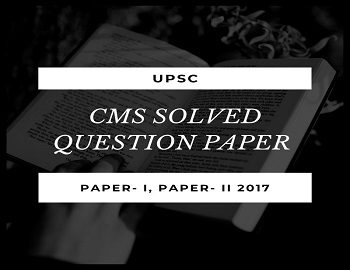
UPSC CMS Solved Question Paper 2017 (Paper I):
- Which of the following is NOT correct?
(a) Hepatitis A does not lead to massive hepatic necrosis
(b) Hepatitis B vaccination is part of universal childhood vaccination
(c) Hepatitis C is commonest cause of transfusion transmitted hepatitis
(d) Hepatitis E carries very high mortality in pregnant women
Ans: (a) Hepatitis A does not lead to massive hepatic necrosis.
- Which of the following antihypertensive drugs is contraindicated in pregnancy?
(a) Hydralazine
(b) Amlodipine
(c) Labetalol
(d) Ramipril
Ans: (d) Ramipril.
- Which of the following least predisposes to infective endocarditis?
(a) Ventricular septal defect
(b) Atrial septal defect
(c) Patent ductus arteriosus
(d) Tetralogy of Fallot
Ans: (b) Atrial septal defect.
- A 60 year old male with Marfan’s syndrome comes to emergency department with severe generalised tearing pain localised to chest anteriorly and inter scapular region, sweating and weakness. On examination, his BP is 200/140 mm Hg. X ray chest shows widening of superior mediastinum. ECG shows sinus tachycardia. What is the
most likely diagnosis?
(a) Acute pulmonary embolism
(b) Dissection of aorta
(c) Acute myocardial infraction
(d) Acute pericarditis
Ans: (b) Dissection of aorta.
- A patient who is allergic to penicillin can be prescribed which of the following drugs for prophylaxis of acute rheumatic fever?
(a) Ciprofloxacin
(b) Erythromycin
(c) Cotrimoxazole
(d) Tetracycline
Ans: (b) Erythromycin.
- QT interval is prolonged in:
(a) Hypocalcaemia
(b) Hyperkalaemia
(c) Hypermagnesaemia
(d) Digoxin therapy
Ans: (a) Hypocalcaemia.
- Differential cyanosis is seen in:
(a) Atrial septal defect with pulmonary arterial hypertension
(b) Ventricular septal defect with pulmonary arterial hypertension
(c) Patent ductus arteriosuswith pulmonary arterial hypertension
(d) Fallot tetralogy
Ans: (c) Patent ductus arteriosuswith pulmonary arterial hypertension.
- Wilson’s disease is characterised by all EXCEPT:
(a) Increased urinary copper
(b) Increased hepatic copper
(c) Deposition of copper in Descemet’s membrane
(d) Increased serum ceruloplasmin
Ans: (d) Increased serum ceruloplasmin.
- Following drugs are used for H.Pylori eradication EXCEPT:
(a) Amoxycillin
(b) Bismuth subsalicylate
(c) Tetracycline
(d) Cephalexin
Ans: (d) Cephalexin.
- A 45 year old female comes to you with dysphagia. She is found to have anaemia and koilonychia. Most likely diagnosis is:
(a) Plummer Vinson syndrome
(b) Boerhaave syndrome
(c) Carcinoma oesophagus
(d) Reflux oesophagitis
Ans: (a) Plummer Vinson syndrome.
- Chest tube insertion should be considered in a patient with parapneumonic effusion include the following EXCEPT:
(a) Loculated pleural effusion
(b) Positive Gram stain/culture of pleural fluid
(c) Pleural effusion is less than 10 mm thickness on decubitus
(d) Pleural fluid pH less than 7.20
Ans: (c) Pleural effusion is less than 10 mm thickness on decubitus.
- A patient underwent hip replacement surgery. On fourth post-operative day, he had dyspnoea, pleuritic pain and haemoptysis. Most likely diagnosis is:
(a) Pulmonary embolism
(b) Pneumonia
(c) Pulmonary oedema
(d) Pericarditis
Ans: (a) Pulmonary embolism.
- A 55 year old male with a history of chronic obstructive pulmonary disease was rushed to emergency department with increasing shortness of breath, fever and a productive cough with yellow green sputum. He has difficulty in communicating because of his inability to complete a sentence. Measurement of arterial blood gas shows pH 7.3, PaCO2 68 mmHg, HCO3 28 mmol/L, and PaO2 60 mmHg. How would you interpret this?
(a) Respiratory acidosis, uncompensated
(b) Respiratory alkalosis, uncompensated
(c) Respiratory acidosis, partially compensated
(d) Respiratory alkalosis, partially compensated
Ans: (c) Respiratory acidosis, partially compensated.
- A 40 years old woman presents with hematuria, ecchymoses and menorrhagia of six months duration. What is the most likely diagnosis?
(a) Haemophilia A
(b) Haemophilia B
(c) Idiopathic thrombocytopaenic purpura
(d) Henoch Schonlein purpura
Ans: (c) Idiopathic thrombocytopaenic purpura.
- Which of the following heavy metal poisoning strictly affects motor nerve ?
(a) Cadmium
(b) Mercury
(c) Lead
(d) Thallium
Ans: (c) Lead.
- A patient develops skin necrosis 3 days after being started on warfarin for deep vein thrombosis. What is the most likely cause?
(a) Antiphospholipid antibody syndrome
(b) Protein C deficiency
(c) Disseminated intravascular coagulation
(d) Thrombotic thrombocytopaenic purpura
Ans: (b) Protein C deficiency.
- A 15 year old boy is brought to emergency with two days history of headache, vomiting and altered sensorium. His BP is 70 mmHg systolic and he has ecchymoses on his skin. Most likely organism causing his condition is:
(a) Haemophilus influenzae
(b) Listeria monocytogenes
(c) Neisseria meningitidis
(d) Streptococcus pneumoniae
Ans: (c) Neisseria meningitidis.
- A child presents with episode of hematuria soon after respiratory tract infection. What is the most likely diagnosis?
(a) IgA nephropathy
(b) Wegener granulomatosis
(c) Post streptococcal glomerulonephritis
(d) Churg Strauss syndrome
Ans: (a) IgA nephropathy.
- In microalbuminuria, 24 hours urinary albumin is:
(a) 8-10 mg
(b) 30-300 mg
(c) 300-3000 mg
(d) > 3000 mg
Ans: (b) 30-300 mg.
- Following are complications of acute renal failure EXCEPT:
(a) Intravascular volume overload
(b) Hyponatraemia
(c) Hyperkalaemia
(d) Metabolic alkalosis
Ans: (d) Metabolic alkalosis.
- Deficiency of which vitamin causes subacute combined degeneration of spinal cord?
(a) Vitamin B1
(b) Vitamin B6
(c) Vitamin B2
(d) Vitamin B12
Ans: (d) Vitamin B12.
- Obstructive lung function tests are seen in which of the following conditions?
(a) Obesity
(b) Kyphoscoliosis
(c) Pleural effusion
(d) Asthma
Ans: (d) Asthma.
- In which of the following conditions is there an increase in lung diffusion capacity?
(a) Emphysema
(b) Idiopathic pulmonary fibrosis
(c) Alveolar haemorrhage
(d) Pulmonary oedema
Ans: (c) Alveolar haemorrhage.
- Which one of the following statements is correct?
(a) Omalizumab is an antileukotriene
(b) Omalizumab is a blocking antibody that neutralises circulating IgE
(c) Omalizumab is a newer long acting anticholinergic agent
(d) Omalizumab is once a day long acting beta-2 agonistic
Ans: (b) Omalizumab is a blocking antibody that neutralises circulating IgE.
- Widespread concave ST segment elevation and PR depression in most leads except aVR lead favours the diagnosis of:
(a) Acute myocardial infarction
(b) Pericarditis
(c) Digoxin toxicity
(d) Hypertrophic obstructive cardiomyopathy
Ans: (b) Pericarditis.
- A known case of lepromatous leprosy was initiated on treatment. She developed painful erythmatous papules with fever and lymphadenopathy. What is the likely reactional state?
(a) Type 1 lepra reaction
(b) Type 2 lepra reaction
(c) Lucio’s phenomenon
(d) Lupus pernio
Ans: (b) Type 2 lepra reaction.
- Which of the following is not true regarding congestive cardiac failure in the elderly?
(a) Incidence rises with age
(b) Common causes include coronary artery disease and hypertension
(c) Diastolic dysfunction is often present
(d) Loop diuretics are usually well tolerated
Ans: (d) Loop diuretics are usually well tolerated.
- Multidrug resistant tuberculosis is defined as:
(a) At least resistance to three or more antitubercular drugs
(b) At least resistance to Isoniazid, Streptomycin and Ethambutol
(c) At least resistance to Isoniazid and Rifampicin
(d) At least resistance to Streptomycin and Rifampicin
Ans: (c) At least resistance to Isoniazid and Rifampicin.
- Aortic stenosis is associated with:
(a) Pulsus paradoxus
(b) Pulsus parvus et tardus
(c) Pulsus alternates bisferens
(d) Pulsus bigeminus
Ans: (b) Pulsus parvus et tardus.
- Which of the following is associated with hypercoagulable state?
- Protein C deficiency
- Antiphospholipid syndrome
- Homocysteinemia
Select the correct answer using the code given below:
(a) 1 only
(b) 2 and 3 only
(c) 1 and 3 only
(d) 1, 2 and 3
Ans: (d) 1, 2 and 3.
- A 20 year old male walked into outpatient department with high grade fever, cough and chest pain for one day. Chest X-ray showed consolidation of left upper zone. His respiratory rate is 22/minute, pulse rate 96/minute, BP systolic 120 mmHg and blood urea 18 mg/dl. What is his CURB score?
(a) 0
(b) 1
(c) 2
(d) 3
Ans: (a) 0.
- Which of the following conditions is an autosomal dominant disorder?
(a) G-6PD deficiency
(b) Sickel cell disease
(c) Fanconi anaemia
(d) Marfan syndrome
Ans: (d) Marfan syndrome.
- Consider the following statements regarding the treatment of bronchial asthma:
- Tablets of β2 adrenoceptor agonist are better than aerosol therapy
- Inhaled corticosteroids are contraindicated in acute severe asthma
- Oral steroids may be necessary for severe acute asthma
- Anticholinergic bronchodilators are muscarinic antagonists
- Salmeterol and formoterol are highly selective and potent long acting β2
adrenoceptor agonists
Which of the statements given above are true?
(a) 1, 4 and 5 only
(b) 3, 4 and 5 only
(c) 1, 2 and 5 only
(d) 1, 2 and 3 only
Ans: (b) 3, 4 and 5 only.
- Acute massive pulmonary embolism is manifested by the following EXCEPT:
(a) Reduced PaO2 and reduced PaCO2
(b) Pulmonary opacities in chest X ray
(c) SIQIIITIII with RBBB in ECG
(d) Reduced cardiac output and acute right heart failure
Ans: (b) Pulmonary opacities in chest X ray.
- The side effects of isoniazid include the following EXCEPT:
(a) Hepatitis
(b) Rash
(c) Peripheral neuropathy
(d) Hyperuricaemia
Ans: (d) Hyperuricaemia.
- A patient of COPD develops a large pneumothorax during a violent bout of coughing. The most appropriate management would be:
- Simple aspiration
- Tube thoracostomy
- Pleurodesis
Which of the above is/are correct?
(a) 1 and 2
(b) 2 and 3
(c) 1 and 3
(d) 2 only
Ans: (b) 2 and 3.
- Carbon dioxide tension (PaCO2) in arterial blood at sea level is:
(a) Less than 25 mm of Hg
(b) 25-35 mm of Hg
(c) 35-45 mm of Hg
(d) 45-55 mm of Hg
Ans: (c) 35-45 mm of Hg.
- The volume of fresh air entering the alveoli each minute is called as:
(a) Dead space
(b) Diffusing capacity
(c) Alveolar ventilation
(d) Ventilation perfusion
Ans: (c) Alveolar ventilation.
- Exacerbations of bronchial asthma that occur with little or no warning are called:
(a) Brittle asthma
(b) Acute severe asthma
(c) Poorly controlled asthma
(d) Nocturnal asthma
Ans: (a) Brittle asthma.
- Which of the following constituents of antacid can cause constipation?
(a) Magnesium hydroxide
(b) Aluminium hydroxide
(c) Calcium carbonate
(d) Sodium bicarbonate
Ans: (b) Aluminium hydroxide.
- “TIPS” procedure in the treatment of cirrhosis liver stands for:
(a) Transvenous intrahepatic portal shunt
(b) Transvenous intraabdominal portal shunt
(c) Transjugular intrahepatic portosystemic shunt
(d) Transjugular intrahepatic peritoneal shunt
Ans: (c) Transjugular intrahepatic portosystemic shunt.
- The drug of choice in the treatment of oesophageal candidiasis is:
(a) Fluconazole
(b) Nystatin oral suspension
(c) IV amphotericin
(d) Griseofulvin
Ans: (a) Fluconazole.
- Which of the following statements is NOT true regarding neuroleptic malignant syndrome?
(a) Caused by haloperidol
(b) Characterized by muscle rigidity and hyperthermia
(c) There is stimulation of central dopamine receptors in hypothalamus
(d) Treated by IV dantrolene
Ans: (c) There is stimulation of central dopamine receptors in hypothalamus.
- Type IV renal tubular acidosis may be caused by all of the following EXCEPT:
(a) Low molecular weight heparin
(b) NSAIDS
(c) Penicillin
(d) Trimethoprim
Ans: (c) Penicillin.
- Treatment options available for management of renal artery stenosis is/are:
(a) Medical treatment for hypertension by antihypertensive drugs
(b) Angioplasty, with or without stenting
(c) Renal artery bypass surgery
(d) All of these
Ans: (d) All of these.
- A reversible cause of dementia is:
(a) Alzheimer disease
(b) Huntington chorea
(c) Parkinson disease
(d) Subdural haematoma
Ans: (d) Subdural haematoma
- In Wallenberg syndrome, where is the site of lesion?
(a) Lateral medulla
(b) Medial medulla
(c) Pontomedullary junction
(d) Dorsal midbrain
Ans: (a) Lateral medulla.
- The following are features of polycythaemia vera EXCEPT:
(a) Elevated red cell mass
(b) Normal arterial oxygen saturation
(c) Splenomegaly
(d) Elevated plasma erythropoietin levels
Ans: (d) Elevated plasma erythropoietin levels.
- Which of the following conditions is associated with cigarette smoking?
(a) Non-specific interstitial pneumonia
(b) Acute interstitial pneumonia
(c) Cryptogenic organizing pneumonia
(d) Desquamative interstitial pneumonia
Ans: (d) Desquamative interstitial pneumonia.
- Which of the following is NOT true of Wilson disease?
(a) There is hepatolenticular degeneration
(b) Autosomal recessive transmission
(c) Serum ceruloplasmin is increased
(d) Urinary copper is increased
Ans: (c) Serum ceruloplasmin is increased.
- A 55 year old patient on treatment for pulmonary tuberculosis with Rifampicin, Isoniazid, Pyrazinamide and Ethambutol complain of pain in large and small joints. Which one of the following investigations will you order?
(a) Serum creatinine
(b) Serum amylase
(c) SGOT/SGPT
(d) Serum uric acid
Ans: (d) Serum uric acid.
- The following diseases can cause bullous lesions in the skin EXCEPT:
(a) Pemphigus
(b) Impetigo
(c) Toxic epidermal necrolysis
(d) Pityriasis rosea
Ans: (d) Pityriasis rosea.
- Which of the following disorder is autosomal recessive?
(a) Cystic fibrosis
(b) Nail-patella syndrome
(c) Myotonic dystrophy
(d) Huntington disease
Ans: (a) Cystic fibrosis.
- Which one of the following is the most appropriate treatment for overdose aspirin
ingestion?
(a) Acetazolamide
(b) Sodium bicarbonate
(c) Allopurinol
(d) N-acetyl-cysteine
Ans: (b) Sodium bicarbonate.
- Killer T cells which are responsible for defence against intracellular pathogen are expressed by which of the following CD phenotypes?
(a) CD 2
(b) CD 5
(c) CD 8
(d) CD 10
Ans: (c) CD 8.
- Intravenous immunoglobulin therapy is approved in the following conditions EXCEPT:
(a) Kawasaki disease
(b) Severe rheumatoid arthritis
(c) Guillain Barre syndrome
(d) Dermatomyositis
Ans: (b) Severe rheumatoid arthritis.
- Which of the following does NOT cause small vessel vasculitis?
(a) Churg Strauss Syndrome
(b) Henoch-Schonlein purpura
(c) Kawasaki disease
(d) Granulomatosis with polyangiitis
Ans: (c) Kawasaki disease.
- Most common cells in peripheral blood smear of chronic myeloid leukemia are:
(a) Myeloblasts
(b) Promyelocytes
(c) Metamyelocytes
(d) Neutrophils
Ans: (d) Neutrophils.
- Consider the following statements about infective endocarditis:
- Modified Duke criteria are used for clinical diagnosis
- Echocardiographic findings form one of the major Duke criteria
- Presence of one major and two minor criteria is considered as diagnostic of
endocarditis - Presence of glomerulonephritis is a minor Duke criterion
Which of the statements given above are correct?
(a) 1, 2 and 3 only
(b) 1, 2 and 4 only
(c) 3 and 4 only
(d) 1, 2, 3 and 4
Ans: (b) 1, 2 and 4 only.
- A 16 year old had an acute episode of dyspnoea, wheezing and coughing during early morning hours. The episode resolved spontaneously. What is the likely diagnosis?
(a) Pulmonary oedema
(b) Asthma
(c) Panic attack
(d) Pneumonia
Ans: (b) Asthma.
- An elderly patient had cerebrovascular accident which was diagnosed as ischaemic in nature. Which of the following is a contraindication for thrombolysis?
- Onset of symptoms to time of drug administration is ≤ 4.5 hours
- Gastrointestinal bleeding in preceding 21 days
Select the correct answer using the code given below:
(a) 1 only
(b) 2 only
(c) Both 1 and 2
(d) Neither 1 nor 2
Ans: (b) 2 only.
- Consider the following insulin preparations:
- Aspart
- Glulisine
- Detemir
- Regular
Which of the above are considered short acting insulin?
(a) 1 and 2 only
(b) 3 and 4 only
(c) 1, 2 and 4 only
(d) 1, 2, 3 and 4
Ans: (c) 1, 2 and 4 only.
- A middle aged male known smoker presented with recurrent sinusitis, haemoptysis, haematuria, arthralgia and palpable purpura. What is the most likely diagnosis?
(a) Wegener granulomatosis
(b) Goodpasture syndrome
(c) Polyarteritis nodosa
(d) Systemic lupus erythematosus
Ans: (a) Wegener granulomatosis.
- A patient presents with diarrhoea, steatorrhea and weight loss. Which of the following diseases is LEAST possible?
(a) Whipple disease
(b) Tropical sprue
(c) Celiac disease
(d) Menetrier disease
Ans: (d) Menetrier disease.
- Consider the following statements regarding post-streptococcal glomerulonephritis (PSGN) :
- Immunosupressive therapy is effective
- PSGN develops one to three weeks after streptococcal pharyngitis
- PSGN develops two to six weeks after impetigo
- The classic presentation is acute nephritis
Which of the statements given above are correct?
(a) 1, 2 and 3 only
(b) 2, 3 and 4 only
(c) 1 and 4 only
(d) 1, 2, 3 and 4
Ans: (b) 2, 3 and 4 only.
- A patient with long term implantable cardioverter defibrillator device developed neck and facial swelling, hoarseness of voice, nasal congestion, dysphagia and haemoptysis. The facial swelling increased on supine position. This patient most likely developed:
(a)Cardiac tamponade
(b)Intracardiac thrombosis
(c)Superior vena cava obstruction
(d)Pulmonary thromboembolism
Ans: (c) Superior vena cava obstruction.
- A patient of AIDS developed ophthalmoplegia, ataxia and global confusion. He is likely to have the deficiency of:
(a) Biotin
(b) Niacin
(c) Pyridoxine
(d) Thiamine
Ans: (d) Thiamine.
- An elderly male presents with persistent productive cough with large volume purulent sputum production. He has had several episodes in the past. He also had digital clubbing. He is a case of:
(a) Empyema
(b) Bronchiectasis
(c) Bronchopneumonia
(d) Necrotising pneumonia
Ans: (b) Bronchiectasis.
- A chemical factory worker has acute onset dyspnoea with fever, chills, and malaise, following a few hours of exposure to a new chemical. These symptoms resolve in four to five days after removal from exposure. He is likely to have:
(a) Hypersensitivity pneumonitis
(b) Atypical pneumonia
(c) Cryptogenic organising pneumonia
(d) Non-specific interstitial pneumonia
Ans: (a) Hypersensitivity pneumonitis
- A 25 year old man presents with nausea, vomiting and diarrhoea with crampy abdominal pain. He gives history of consumption of rice preparation in his last meal. What is the likely organism causing the above complaints?
(a) Clostridium perfringens
(b) Bacillus cereus
(c) Staphylococcus aureus
(d) Campylobacter jejuni
Ans: (b) Bacillus cereus.
- A five year old child was diagnosed with nephrotic syndrome, 18 months back. He was treated and successfully went into remission at that time. Following, the initial episode, the child has had 3 relapses, each of which was successfully treated with oral prednisolone (60mg/m2/24h) until remission, followed by 40mg/m2 single dose, alternate days for four weeks. What is the diagnosis?
(a) Nephrotic syndrome, infrequent relapses
(b) Nephrotic syndrome, frequent relapses
(c) Nephrotic syndrome, steroid dependent
(d) Nephrotic syndrome, steroid resistant
Ans: (a) Nephrotic syndrome, infrequent relapses.
- A 7 year old girl presents to you with non-specific abdominal pain, mild abdominal distension, and not growing well. The child weighs 14 kg and height is 95 cm. Systemic examination is normal. The haemoglobin was 7.5 g/dL (microcytic hypochromic RBCs) and has not responded to iron therapy. Which of the following will be the first investigation you will like to do for diagnosing the condition?
(a) Bone marrow aspiration
(b) Tissue transglutaminase antibodies
(c) Lower GI contrast examination
(d) Colonoscopy/sigmoidoscopy
Ans: (b) Tissue transglutaminase antibodies.
- A seven year old boy weighing 20 kg presented with bleeding from upper GI tract (haemetemasis) for last 18 hours. On examination, PR-86/m, RR-16/m and BP-100/70 mmHg; and spleen is palpable 5 cm below costal margin. There is no other abnormality. Liver function tests are normal. What is the next best step in management?
(a) Fluid resuscitation with crystalloids
(b) Intravenous vasopressin
(c) Intravenous propranolol
(d) Transdermal nitroglycerine
Ans: (b) Intravenous vasopressin.
- A seven year old girl presents in emergency room with hypertension, lethargy, headache, seizures, and visual disturbances. Fundus examination reveals hemorrhages and exudates. Which of the following treatment regimen will be the most appropriate for this child?
(a) Sublingual nifedipine
(b) Intravenous labetalol infusion
(c) Intravenous minoxidil
(d) Furosemide
Ans: (b) Intravenous labetalol infusion.
- On routine newborn screening at day 3 of life, the baby was found to have TSH level 40mU/L. What should be the next step?
(a) Repeat thyroid profile within one week
(b) Start child on thyroxine immediately
(c) Repeat thyroid profile after four weeks
(d) Repeat thyroid profile/ start thyroxine, if the child has clinical features of congenital hypothyroidism, otherwise wait and watch
Ans: (a) Repeat thyroid profile within one week.
- A five year old girl is brought to you with history of fever for seven days associated with rash, anorexia, myalgia and petechial haemorrhages. Which of the following investigations will be most appropriate for making a diagnosis of dengue fever?
(a) Detection of NS1 antigen
(b) Platelet count
(c) IgG capture ELISA
(d) Detection of IgM antibodies for dengue
Ans: (d) Detection of IgM antibodies for dengue.
- An eight year old boy was diagnosed to have P.vivax malaria and was treated with appropriate dosages of chloroquine. The fever subsided but recurred after 3 weeks. Peripheral smear was again positive for P.vivax. This child should now be treated as a case with
(a) Relapse
(b) Recrudescence
(c) Either relapse/recrudescence
(d) Fresh infection
Ans: (c) Either relapse/recrudescence.
- A two day old neonate is brought with cyanosis, single second heart sound, and pansystolic murmur on the left sternal border. ECG reveals left axis deviation, right atrial overload and left ventricular hypertrophy. What is the most likely diagnosis?
(a) Tetrology of Fallot
(b) Tricuspid atresia
(c) Transposition of great arteries
(d) Total anomalous pulmonary venous connection
Ans: (b) Tricuspid atresia.
- A three year old girl is brought with complaint of not being able to ever stand or walk. She achieved head control at one year of age. Examination reveals generalised hypotonia, brisk knee jerk, and ankle clonus. What is the likely diagnosis?
(a) Cerebral palsy
(b) Spinal muscular atrophy
(c) Congenital hypothyroidism
(d) Congenital myotonic dystrophy
Ans: (a) Cerebral palsy
- A child presents with sensations of itching, burning and a probable foreign body beneath the eyelids. Examination reveals photophobia, large oval follicles within the conjunctiva and preauricular adenopathy. The most likely diagnosis is:
(a) Epidemic keratoconjunctivitis
(b) Vernal conjunctivitis
(c) Trachomatous conjunctivitis
(d) Phlyctenular conjunctivitis
Ans: (a) Epidemic keratoconjunctivitis.
- A seven year old boy presents with acute onset of mild intermittent pain in the right groin and a limp. Abduction and internal rotation of the hip were restricted on the affected side. There was no fever. Radiographs of the pelvis were normal. The most likely diagnosis is :
(a) Transient monoarticular synovitis
(b) Legg Calve Perthes disease
(c) Slipped capital femoral epiphyses
(d) Osteochondritis dissecans
Ans: (a) Transient monoarticular synovitis.
- A child is brought with history of ingestion of an unknown substance. On examination child has excess salivation, lacrimation, miosis, gastrointestinal cramps and emesis. What was the most likely substance ingested?
(a) Carbamates
(b) Phenothiazines
(c) Opioids
(d) Tricyclic antidepressants
Ans: (a) Carbamates.
- A term newborn presents with respiratory failure which is refractory to mechanical ventilation, surfactant replacement therapy, glucocorticoid administration and extra corporeal membrane oxygenation. The most likely diagnosis is:
(a) Surfactant Protein B deficiency
(b) Primary ciliary dyskinesia
(c) Persistent tachypnea of infancy
(d) Lymphocytic interstitial pneumonitis
Ans: (a) Surfactant Protein B deficiency.
- A child after snake bite develops petechiae and ecchymosis on the skin. In addition, child develops bleeding from venipuncture site and oliguria. The most likely snake species is:
(a) Pit viper
(b) Cobra
(c) Mamba
(d) Python
Ans: (a) Pit viper.
- A six year old boy presents with short neck, low hairline and restriction of neck movements. The child also has Sprengel anomaly, scoliosis, and fused cervical vertebrae. The most likely diagnosis is:
(a) Atlantoaxial instability
(b) Klippel Feil syndrome
(c) Noonan syndrome
(d) Sandifer syndrome
Ans: (b) Klippel Feil syndrome.
- A 10 year old boy presents with recurrent bouts of nasal congestion, itching, sneezing, clear rhinorrhoea and conjunctival irritation. On examination he has conjunctival hyperaemia, allergic gape and a transverse nasal crease. Which of the following drugs is preferred for management of this child?
(a) Diphenhydramine
(b) Fluticasone
(c) Cetirizine
(d) Ipratropium bromide
Ans: (b) Fluticasone.
- A two year old child presents with partial albinism and susceptibility to infection. Peripheral smear examination reveals giant peroxidise positive lysosomal granules in granulocytes. Which of the following is most likely diagnosis?
(a) Angelman Syndrome
(b) Hermansky Pudlak Syndrome
(c) Waardenburg Syndrome
(d) Chediak Higashi syndrome
Ans: (d) Chediak Higashi syndrome.
- A one year old child on exclusive milk feeds presents with constipation. On examination there is no fecal impaction. What is the next step in management?
(a) Oral lactulose
(b) Increasing intake of vegetables and cereals
(c) Colonic enemas using polyethylene glycol
(d) Milk of Magnesia
Ans: (b) Increasing intake of vegetables and cereals.
- A six year old boy presents with generalized seizure disorder and hypo pigmented skin lesions. On examination he has tiny red nodules over the nose and cheeks. The most likely diagnosis is:
(a) Tuberous sclerosis
(b) Sturge Weber disease
(c) PHACE Syndrome
(d) Neurofibromatosis
Ans: (a) Tuberous sclerosis.
- Which of the following can cause bilateral sensorineural hearing loss?
(a) Histiocytosis
(b) Cholesteatoma
(c) Loop diuretics
(d) Glomus tumors
Ans: (c) Loop diuretics.
- The joint sitting of Parliament for transacting a legislative business is presided over by:
(a) The President of India
(b) The Vice President of India
(c) The Prime Minister of India
(d) The Speaker of Lok Sabha
Ans: (d) The Speaker of Lok Sabha.
- Recently, a massive coral bleaching has been reported in the ‘Great Barrier Reef’. It is located near the coast of:
(a) Queensland
(b) Maldives
(c) Hawaii
(d) Andaman
Ans: (a) Queensland.
- Who is the first Law Officer of the Government of India?
(a) Chief Justice of India
(b) Attorney General of India
(c) Law Secretary
(d) Union Law Minister
Ans: (b) Attorney General of India.
- In the context of Genetic Engineering, scientists have developed a new
computational method called ‘Target Finder’ which can predict where non- coding DNA interacts with genes. Which of the following is a likely advantage of this?
(a) Artificial induction of beneficial mutations so as to develop high-yielding varieties
(b) Finding new drug targets to treat some genetic diseases
(c) Rapid cloning of domesticated animals
(d) All of these
Ans: (b) Finding new drug targets to treat some genetic diseases.
- Consider the following:
- Gold
- Platinum
- Silver
Which of the above is/are found in e-waste?
(a) 1 and 2 only
(b) 3 only
(c) 1, 2 and 3
(d) None
Ans: (c) 1, 2 and 3.
- “Boil a small quantity of khoya with some water, cool and add a few drops of iodine solution and see the formation of blue colour”. This is the test to find the presence of which of the following?
(a) Fructose
(b) Gram flour
(c) Starch
(d) Urea
Ans: (c) Starch.
- Which of the following CANNOT be used as a biofertilizer in rice cultivation?
(a) Azolla
(b) Azospirillum
(c) Blue green algae
(d) Rhizobium
Ans: (d) Rhizobium.
- Groundwater in many areas in West Bengal has been contaminated leading to a large number of cases of poisoning. What is the substance responsible for such cases?
(a) Arsenic
(b) Cyanide
(c) Polonium
(d) Lead
Ans: (a) Arsenic.
- For acquiring ethanol for blending with petrol, the oil companies in India depend on:
(a) Cosmetic industry
(b) Food processing plants
(c) Fertilizer factories
(d) Sugar mills
Ans: (d) Sugar mills.
- Consider the following statements:
Targeted Delivery of Financial and Other Subsidies, Benefits and Services Act, 2016 aims to
- strengthen the Pradhan Mantri Jan Dhan Yojana
- provide funds for the relief of farmers
Which of the statements given above is/are correct?
(a) 1 only
(b) 2 only
(c) Both 1 and 2
(d) Neither 1 nor 2
Ans: (d) Neither 1 nor 2.
- The Pradhan Mantri Jan Dhan Yojna aims to promote:
(a) Financial inclusion
(b) Collateral security in housing for rural and urban poor
(c) Cashless financial transactions
(d) Financial literacy
Ans: (a) Financial inclusion.
- The objective of the ‘’Paramparagat Krishi Vikas Yojana” is to promote:
(a) Conservation of groundwater
(b) Cultivation of wild varieties of cereal crops
(c) Dryland farming
(d) Organic farming
Ans: (d) Organic farming.
- Which among the following is a very water intensive crop?
(a) Grapes
(b) Finger millet
(c) Sugarcane
(d) Wheat
Ans: (c) Sugarcane.
- Which of the following does nanoscience have applications?
- Drug delivery
- Electronics
- Food processing
- Water purification
Select the correct answer using the code given below:
(a) 1 and 2 only
(b) 1 and 3 only
(c) 2, 3 and 4 only
(d) 1, 2, 3 and 4
Ans: (d) 1, 2, 3 and 4.
- Which of the following is/are the exclusive powers of the Lok Sabha as compared to Rajya Sabha?
- Introducing money bills
- Passing a motion of no-confidence against the Council of Ministers
Select the correct answer using the code given below:
(a) 1 only
(b) 2 only
(c) Both 1 and 2
(d) Neither 1 nor 2
Ans: (c) Both 1 and 2.
- Who among the following do not participate in the election of the President of India?
(a) Elected members of Rajya Sabha
(b) Elected members of Vidhan Sabhas
(c) Elected members of Lok Sabha
(d) Elected members of Vidhan Parishads
Ans: (d) Elected members of Vidhan Parishads.
- There is a popular opposition to the use of ‘’plastic microbeads”. In the
manufacture of which of the following are they used?
(a) Cosmetics
(b) Electronics
(c) Wooden furniture
(d) Synthetic textiles
Ans: (a) Cosmetics.
- Consider the following statements:
- In certain parts of India, the cultivation of opium is legally allowed.
- Opium gum is mixed with cluster bean gum in fracking technology that is used in the shale gas extraction.
Which of the statements given above is/are correct?
(a) 1 only
(b) 2 only
(c) Both 1 and 2
(d) Neither 1 nor 2
Ans: (a) 1 only.
- There is a worldwide protest against the use of hydrofluorocarbons. In which of the following household things are they used?
(a) Air-conditioning machines
(b) Cooking gas cylinders
(c) Gas geysers
(d) Microwave ovens
Ans: (a) Air-conditioning machines.
- What is/are the objectives of Cartagena Protocol on Biosafety?
- Establishing or promoting in-situ conservation facilities for rare and
endangered organisms - Maintaining the worldwide network of gene banks for all the known
flora and fauna
Select the correct answer using the code given below:
(a) 1 only
(b) 2 only
(c) Both 1 and 2
(d) Neither 1 nor 2
Ans: (d) Neither 1 nor 2.
- Consider the following animals:
- Sloth bear
- Jaguar
- Hoolock gibbon
Which of the above is/are found in India in their natural habitat?
(a) 1 only
(b) 2 and 3 only
(c) 1 and 3 only
(d) 1, 2 and 3
Ans: (c) 1 and 3 only.
- Consider the following statements:
- Biodiversity is normally greater in the lower latitude as compared to higher latitudes.
- Along the mountain gradient, biodiversity is normally greater in the lower altitudes as compared to higher altitudes.
Which of the statements given above is/are correct?
(a) 1 only
(b) 2 only
(c) Both 1 and 2
(d) Neither 1 nor 2
Ans: (c) Both 1 and 2.
- Aflatoxins are formed by:
(a) Aspergillus flavus
(b) Candida albicans
(c) Cryptococcus neoformans
(d) Coccidioides schenckii
Ans: (a) Aspergillus flavus.
- Consider the following districts:
- Munnar
- Mandi
- Krishna
Which of the above districts is/are well known for tea plantations?
(a) 3 only
(b) 2 and 3 only
(c) 1 and 2 only
(d) 1 only
Ans: (c) 1 and 2 only.
- ‘Fly ash’ is emitted from:
(a) Brick kilns
(b) Motor vehicles
(c) Sewage treatment plants
(d) Thermal power plants
Ans: (d) Thermal power plants.
- Calcium carbide is used
(a) as rodent killer
(b) as insecticide
(c) for fruit ripening
(d) for lowering soil salinity
Ans: (c) for fruit ripening.
- With reference to food additives, consider the following statements:
- Benzoic acid and sorbic acid function as antimicrobial agents.
- Citric acid is used to suppress browning of fruits and vegetables.
Which of the statements given above is/are correct?
(a) 1 only
(b) 2 only
(c) Both 1 and 2
(d) Neither 1 nor 2
Ans: (c) Both 1 and 2.
- With reference to the use of microorganisms in food processing, consider the following statements:
- Lactic acid bacteria can ferment any monosaccharide or polysaccharide
into lactic acid. - Baker’s yeast is manufactured from single cell isolates of Saccharomyces
cerevisiae.
Which of the statements given above is/are correct?
(a) 1 only
(b) 2 only
(c) Both 1 and 2
(d) Neither 1 nor 2
Ans: (b) 2 only.
- Which of the following chemicals is/are used in food preservation?
- Calcium propionate
- Potassium metabisulphite
- Lecithin
Select the correct answer using the code given below:
(a) 1 and 2 only
(b) 3 only
(c) 1, 2 and 3
(d) None of them is used in food preservation
Ans: (c) 1, 2 and 3.
- What is ‘M-cessation’, sometimes seen in news?
(a) An initiative to help tobacco users to quit tobacco
(b) A mobile phone service that delivers audio messages on pregnancy, child birth and child care
(c) An app to learn all the methods of cashless financial transactions
(d) A government initiative to eradicate the availability of narcotics to general public
Ans: (a) An initiative to help tobacco users to quit tobacco.
- UPSC Combined Medical Services Examination Paper (I) 2017.
- UPSC Combined Medical Services Examination Paper (I) 2017- Answer Key.
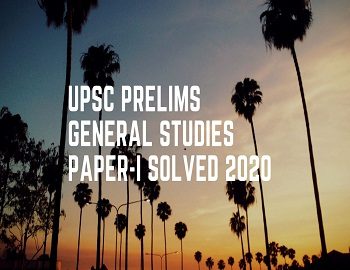
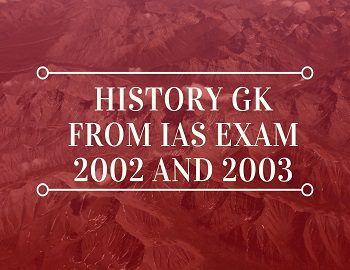
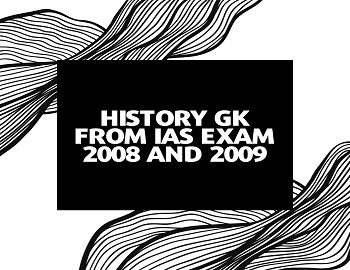
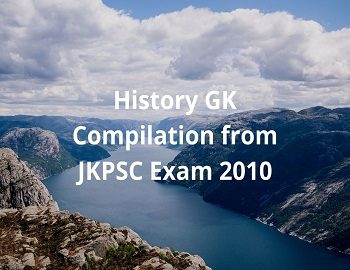
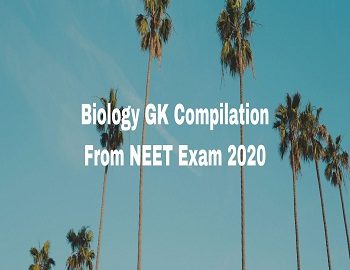
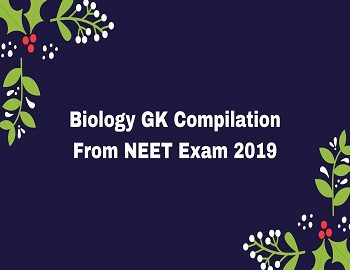
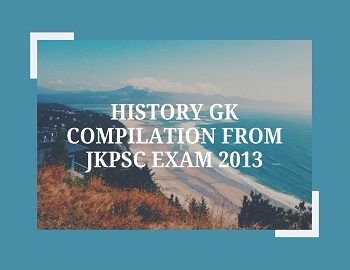
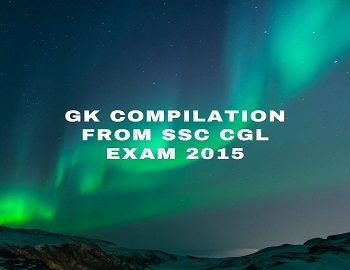
Comments (No)